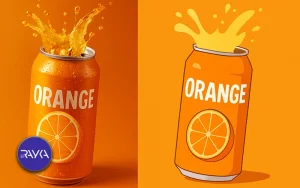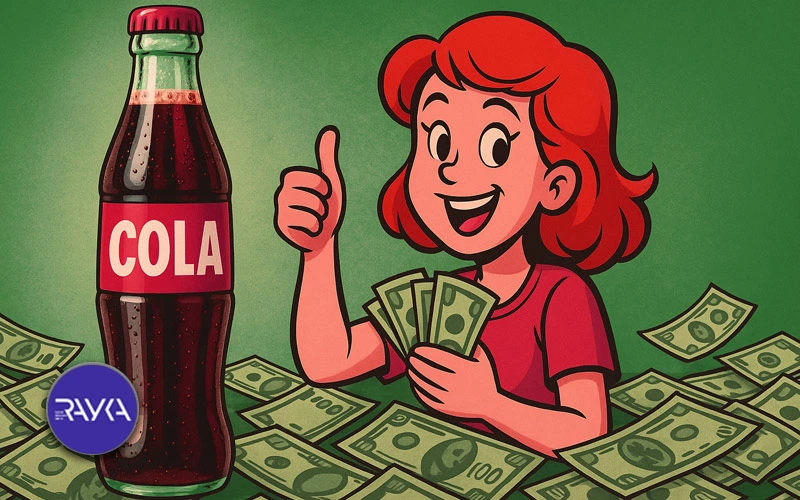
Understanding the difference between real video and motion teaser is essential for any business aiming to choose the most effective type of video advertising. Each format comes with its own features, benefits, and unique applications, making them suitable for different goals and target audiences.
Having a clear grasp of these differences allows you to create a more impactful and professional campaign, helping your brand message reach the audience in the best possible way. In this article, we’ll define both formats and explore their key differences.
A real video teaser, also known as a live-action commercial, is a type of video that features real actors, natural locations, and tangible objects. This format delivers a vivid and authentic feeling, allowing viewers to feel as though they are part of a real, relatable environment.
Real video teasers are especially effective for showcasing products or services that require physical demonstration—such as clothing, home appliances, or automobiles. Thanks to its use of real imagery, this style helps create a stronger emotional and personal connection with the audience.
A motion teaser is a type of video created using 2D or 3D animations and moving graphic elements. This style of advertising is particularly suitable for conveying complex and abstract messages, as it combines colors, shapes, and sounds to create an engaging and impactful experience. The main features of a motion teaser include:

To choose the best type of advertising teaser, understanding the difference between real video and motion teaser is crucial. These differences include production methods, costs, messaging style, and more, which we will explore below.
A real video teaser is created by filming real actors and real locations. In this method, the production team uses professional equipment to capture live footage that conveys a natural and authentic feeling to the audience.
On the other hand, a motion teaser is entirely produced digitally using design and animation software. This means there is no need for physical presence of people or real locations.
Producing a real video teaser generally requires more time and budget because it involves filming, actors, locations, and complex post-production. Conversely, motion teasers, due to the absence of physical equipment and actors, are produced faster and with a smaller budget, making them ideal for projects with tight deadlines.
Real video teasers and motion graphic teasers differ significantly in how they deliver messages and their visual styles. Each has features that offer unique advantages depending on the message type and target audience.
Characteristics of Real Video Teasers
Real video teasers use real actors and natural locations to convey a tangible and authentic feeling to the viewer. They create a strong emotional and human connection with the audience, making them especially suitable for showcasing physical products.
Characteristics of Motion Graphic Teasers
Motion graphic teasers use creative colors, shapes, and animated graphics to present complex concepts in a simple and visual way. They have the ability to display data, statistics, and information attractively, making this style ideal for introducing services and abstract ideas.
One of the key advantages of motion graphic teasers is the ease of making changes even after production is complete. Adjustments to colors, text, or shapes can be done quickly and effortlessly. In contrast, making changes to a real video teaser after filming is difficult and costly, often requiring reshooting scenes or re-hiring actors.
Real video teasers are suitable for audiences seeking an emotional and authentic connection with the product or brand. This style of advertising builds trust and a tangible feeling. Motion graphic teasers, on the other hand, cater more to professional, educational, and business audiences who need more precise explanations and the presentation of complex data.

To better understand the difference between real video and motion teaser, the table below provides a comprehensive and concise comparison of their features, advantages, and limitations. This table helps you make a clearer and faster decision when choosing the type of advertising teaser.
| Features | Real Video Teaser | Motion Graphic Teaser |
|---|---|---|
| Production Method | Filming with real actors and locations | Creating animations and moving graphics with digital software |
| Production Cost | Usually higher, requiring more equipment and personnel | Lower and more cost-effective |
| Production Time | Longer due to filming and post-production stages | Faster and more flexible |
| Message Delivery | Realistic, tangible feeling and emotional connection with the audience | Visual and creative display of complex concepts and data |
| Editability | Difficult and costly after filming | Simple and fast even after production |
| Target Audience | Audiences seeking real and tangible experiences | Businesses and audiences needing detailed explanations and data |
| Common Applications | Physical products, emotional ads, branding | Services, education, data and statistics presentation |
Nowadays, creating advertising teasers with artificial intelligence has become one of the innovative and efficient trends in the advertising world. AI has accelerated the process of designing motion graphics and significantly improved the quality of work. With the help of smart tools, it is possible to produce attractive and professional animations without spending excessive time and costs.
This technology offers features such as automatic motion design, selecting colors and visual templates compatible with the brand, and even automatic generation of sound and music for creators. As a result, creating motion graphic teasers with artificial intelligence has become an ideal option for businesses and advertising agencies.
Raykamah, with years of experience in producing and creating advertising teasers using artificial intelligence, is ready to offer you professional and creative services. For consultation and collaboration, please fill out our contact form, and our experts will get in touch with you as soon as possible.
The difference between real video and motion teaser is clearly evident in production methods, message delivery, cost, and production time. Real video teasers, by conveying a genuine feeling and using real actors and locations, are the best choice for showcasing physical products and creating an emotional connection with the audience.
In contrast, motion graphic teasers visually present complex concepts and offer high flexibility in editing, making them an ideal option for introducing services and data. The choice between these two types of teasers should be based on advertising goals, target audience, and budget to achieve the best results.
Real video uses actual filming, while motion graphics are created based on animation and moving graphics.
Real video is more suitable for physical products due to its genuine and tangible feel.
Yes, usually the cost of producing a motion graphic teaser is lower and the production time is shorter.
Yes, editing a motion graphic teaser is easier and faster than editing a real video teaser.
Yes, creating advertising teasers with artificial intelligence increases production speed and quality. For producing this type of teaser, you can contact us at 09101053525.